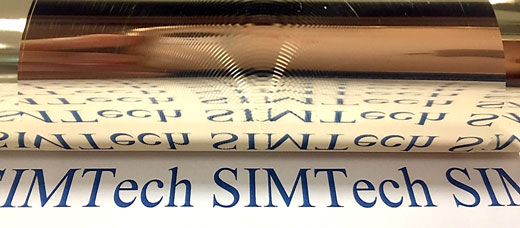| Apr 17, 2019 | |
Extra axis makes for cutting-edge fabrication(Nanowerk News) Adding an extra swinging axis to a 4-axis micro-lens fabrication process can boost the speed and cost-effectiveness of ultra-precise lens manufacturing, which could significantly expand the use of such elements in commercial devices (CIRP Annals - Manufacturing Technology, "High-efficiency swinging-rotating diamond shaping of Fresnel lenses on roller molds"). |
|
 |
|
| A large Fresnel lens fabricated on a roller mold. (© Elsevier) | |
| In 2015, an A*STAR team was the first to develop a 4-axis micro-lens fabrication process. Now, the team, led by XinQuan Zhang from the Singapore Institute of Manufacturing Technology, has added a swinging axis that makes it possible to fabricate complex lenses quickly and cheaply. | |
| Light-based technologies continue to become more sophisticated and increasingly integrated into everyday and advanced applications. Lenses, one of the most fundamental optical components, are used to manipulate light in many such applications, including photovoltaics, infrared detection sensors, light emitting diodes, and wide-angle mirrors and projectors. | |
| Fabricating tiny lenses for miniaturized applications, however, requires extraordinary precision and highly specialized techniques. Roller molding is a promising approach for mass-producing lenses and other complex optical microstructures. It involves patterning a mold with the optical element and then printing the mold on to plastic using a roller. The key challenge remains to be fabricating the mold in the first place. | |
| “Fabricating the mold is very time consuming and costly because all the optical components require mirror-like surface quality and sub-micrometer profile accuracy,” explains Zhang. “In 2015, we developed a 4-axis rotating-tool diamond turning method that was the first technique in the world to enable direct machining of Fresnel lenses on a roller, but was subject to an extremely long machining time.” | |
| A Fresnel lens provides the same function as a normal glass lens but is stripped back to just the curved surface, making it very compact, but also very delicate and difficult to produce. To fabricate a Fresnel lens essentially requires direct precision removal of material using a tool tip until the final lens profile is achieved. The three-dimensional, curved and circular shape of the lens makes this an extraordinarily difficult challenge. | |
| “Fortunately, our Mechanical Precision Machining team is one of the best research teams in the world in the ultra-precision machining of microstructures,” says Zhang. “Building on our previous method, we developed a new technique that incorporates an additional swinging axis, integrated with the existing two rotary and two linear axes, and a customized diamond cutting tool with a new edge profile.” | |
| Using a standard ultra-precision machining system as a basis, Zhang worked with his colleague, Kui Liu, in collaboration with Rui Huang and A. Senthil Kumar from the National University of Singapore for more than a year to design, assemble and test their new 5-axis swinging-rotating diamond machining system. The system integrates an additional swing axis attachment that moves the diamond tool precisely into the desired angular position. The cutting tool was also modified to have various angles, instead of the conventional round tip, to allow the ringed facets of the lens to be cut at high material removal rates. | |
| The team demonstrated the technique by machining an array of radial Fresnel lenses with different lens heights, as well as a large 9 cm-wide Fresnel lens and a hybrid lens with flipped facets. The technique proved to be 30 times faster than the previous machining method, making it possible to machine Fresnel lens molds cost-effectively. This addresses a major obstacle to industry adoption of these components and an essential step for realizing commercial mass production by large-area roller mold processing. | |
| Zhang’s team is already attracting commercial interest for the technology. | |
| “A US company that sells ultra-precision machining systems is interested in our work,” says Zhang. “We are now considering expanding the application of this technique to other microstructuring applications as well, such as Fresnel lens arrays, which can be used in sensors for motion detection in smart homes.” |
| Source: A*STAR | |
|
Subscribe to a free copy of one of our daily Nanowerk Newsletter Email Digests with a compilation of all of the day's news. |
